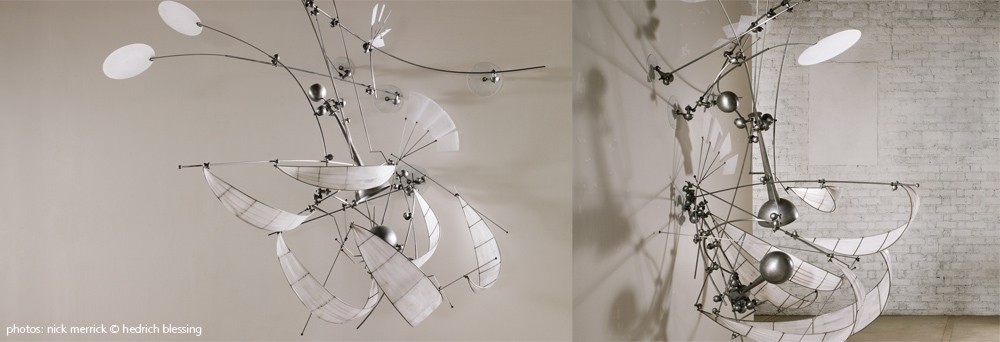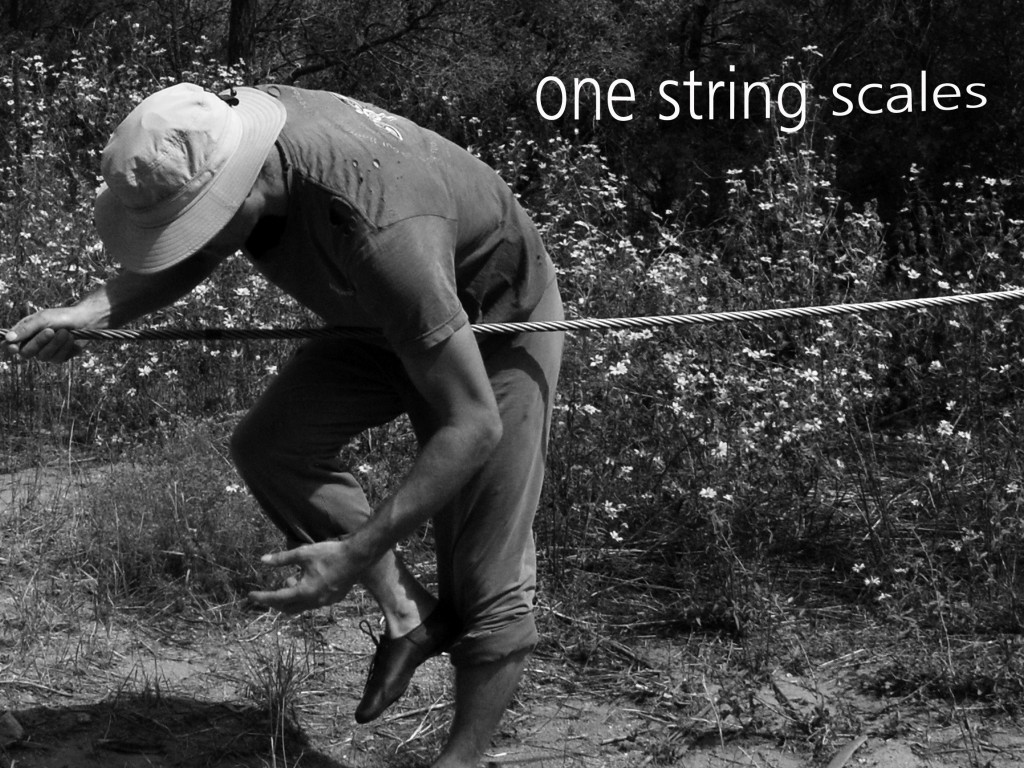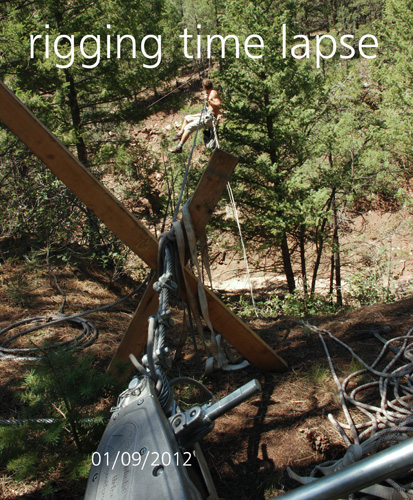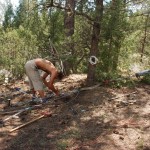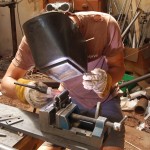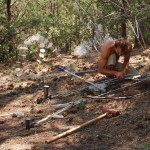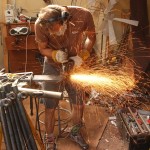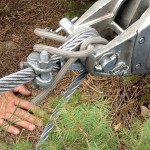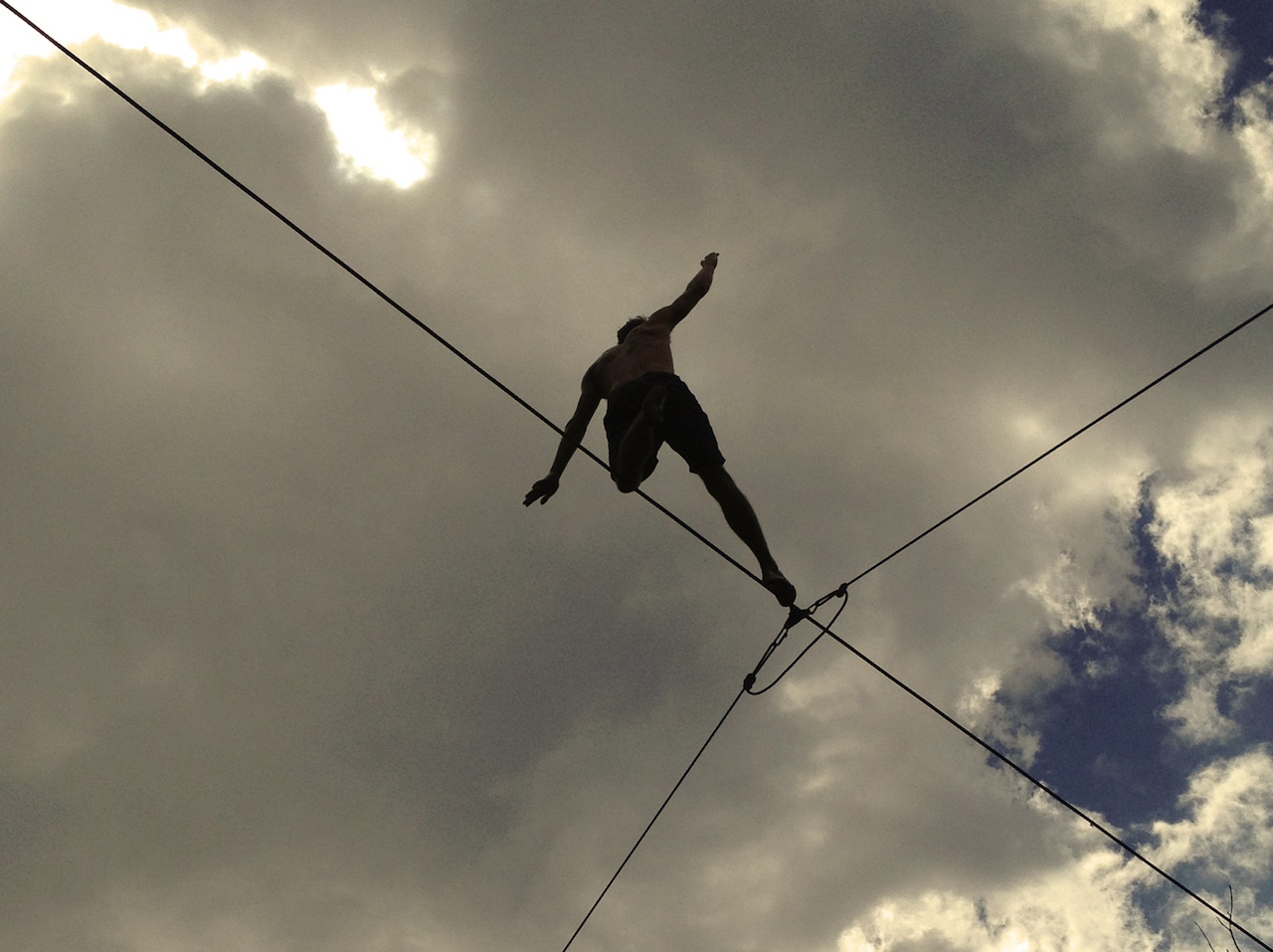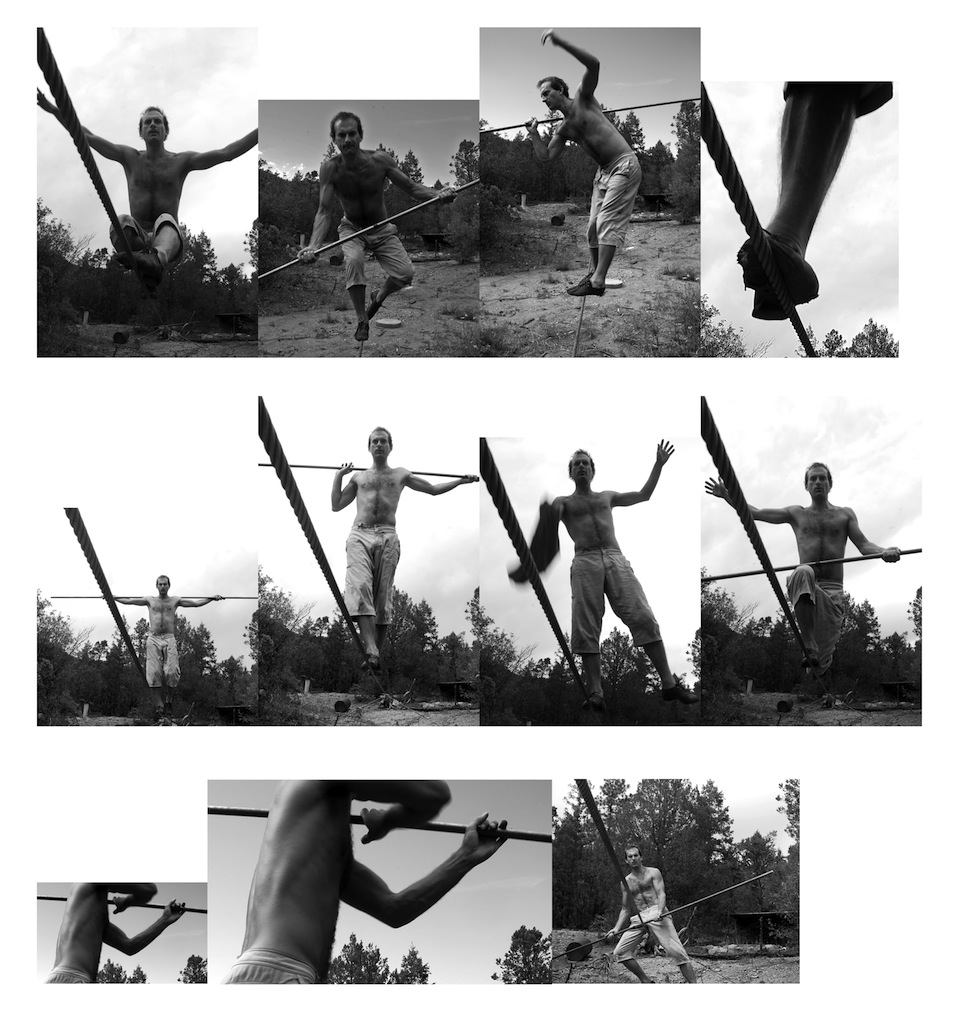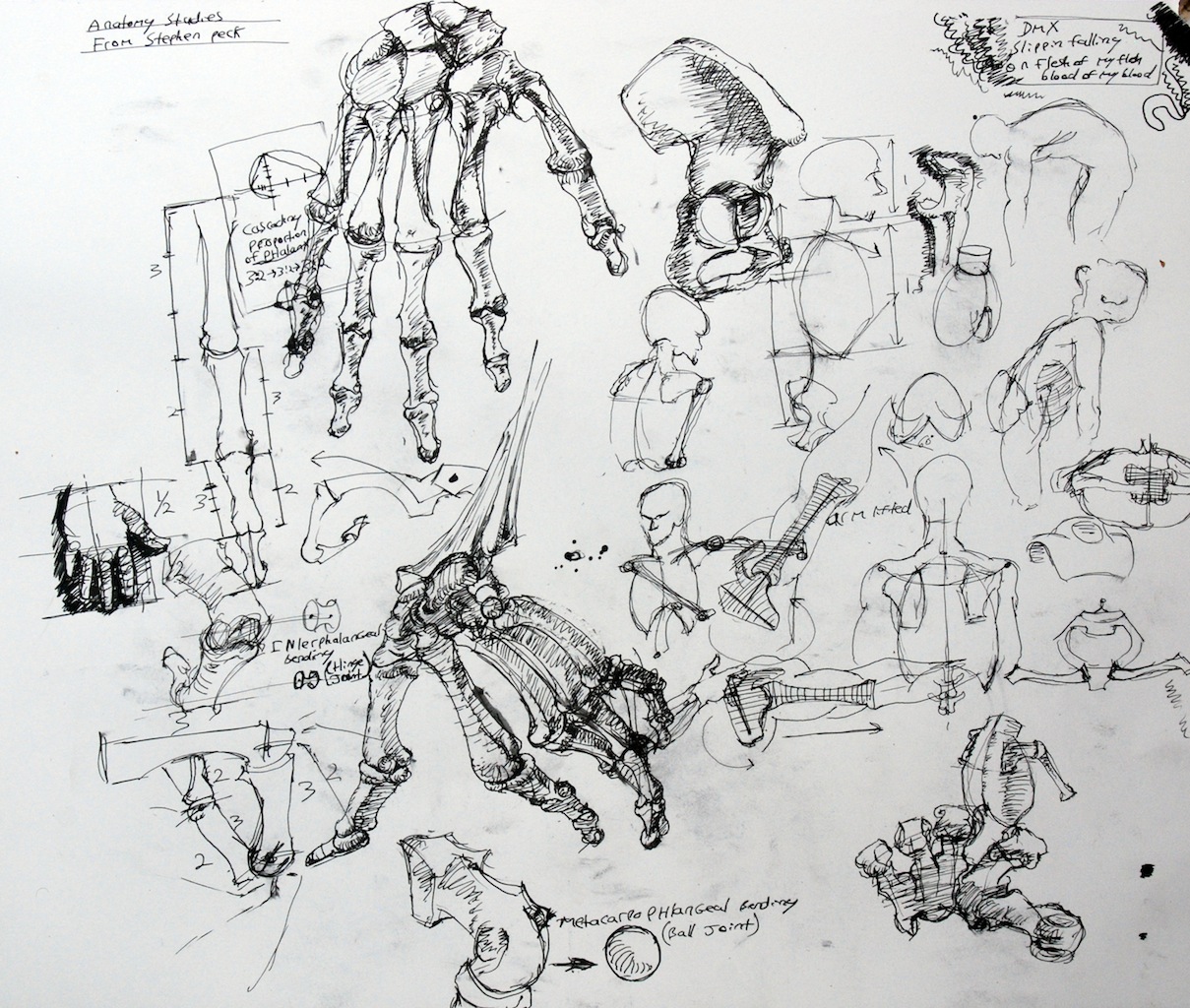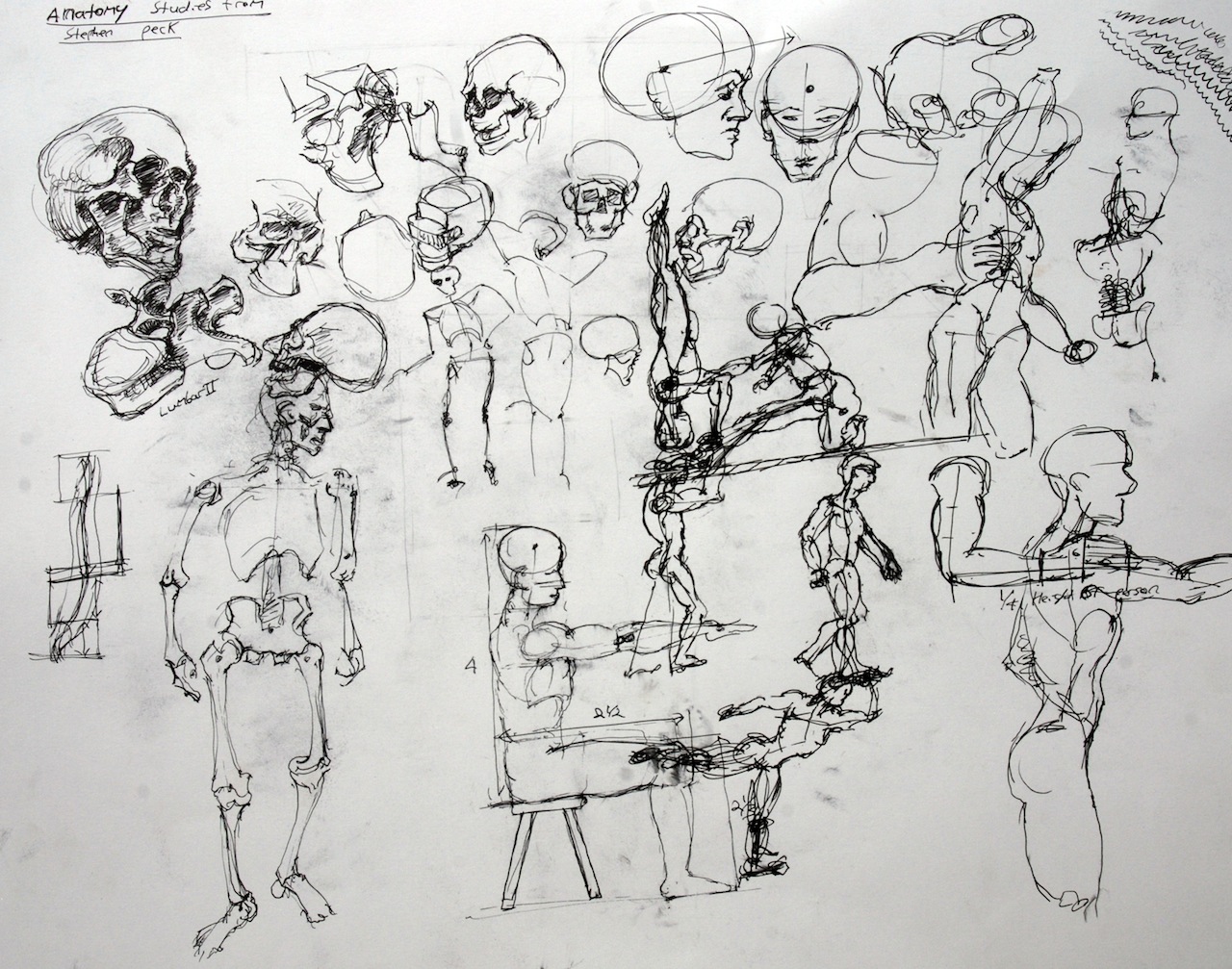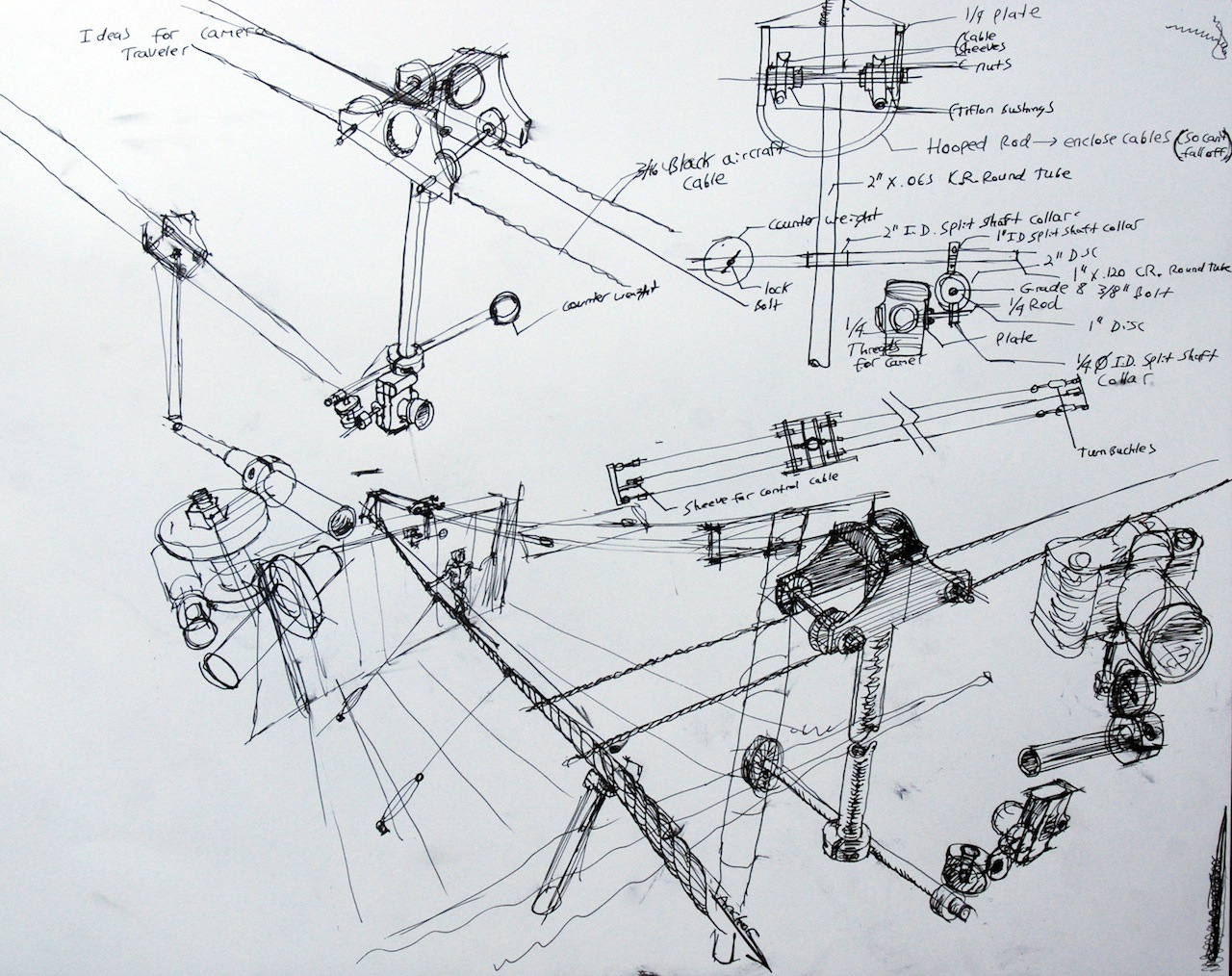Monthly Archives: September 2012
september process
This month has I have found myself exploring rigging, training the body in balance strength and flexibility, studying tensile structure and human anatomy.
I began by building the parts (stakes, cavallettes, cleaning and splicing wire rope) necessary for the erection of a high wire. This was a learning process which involved almost pulling down a tree. If you look at the time lapse video of the wire’s erection, at one point as I am adjusting the tension on the line you can see a tree all but torn from the ground saved only by being chained to a monster stake restraining it from total failure.
After introducing more stakes and rebuilding the anchor I felt it was finally safely rigged.
- rigging main anchor
- building the cavallettis
- rigging main anchor
- making the cavallettes
- wire to Tirfor
I walked on this for two days taking photos of myself with a digital camera, shooting at timed intervals. I was interested in the sky, how it became a scrim. With the vastly different light intensities, abstractions of the image would occur in the photos. Lynn Book, my studio advisor, suggested that I look into Indonesian theater traditions of shadow puppetry. I looked at many images of Wayang Kulit and was inspired by the expressive nature of these puppet. The forms and action of this theater have a deep psychological impact which Artaud describes in the Theater And Its Double.
“The Balinese theater has revealed to us a physical and nonverbal idea of the theater, in which the theater is contained within the limits of everything that can happen on a stage.” (pg. 68)
He speaks of how in the west traditional theater has become anemic because of the myopic reverence to dialogue and script. But he tells us of the theater’s power which lies not in verbal language but in a more elemental form.
“In a word to raise the question of the intellectual efficacity of expression by means of objective forms, of the intellectual efficacity of a language which would use only shapes, or noise, or gesture, is to raise the question of the intellectual efficacy of art.” (pg. 69)
I imagined exploring the high wire as a stage for such theater, with elemental forms (lines, discs, toruses, ect) suspended in the air and a human character upon the wire in a state of delicate and fragile balance. In taking pictures limited by the dynamic range of the camera I would produce a theater of silhouettes.
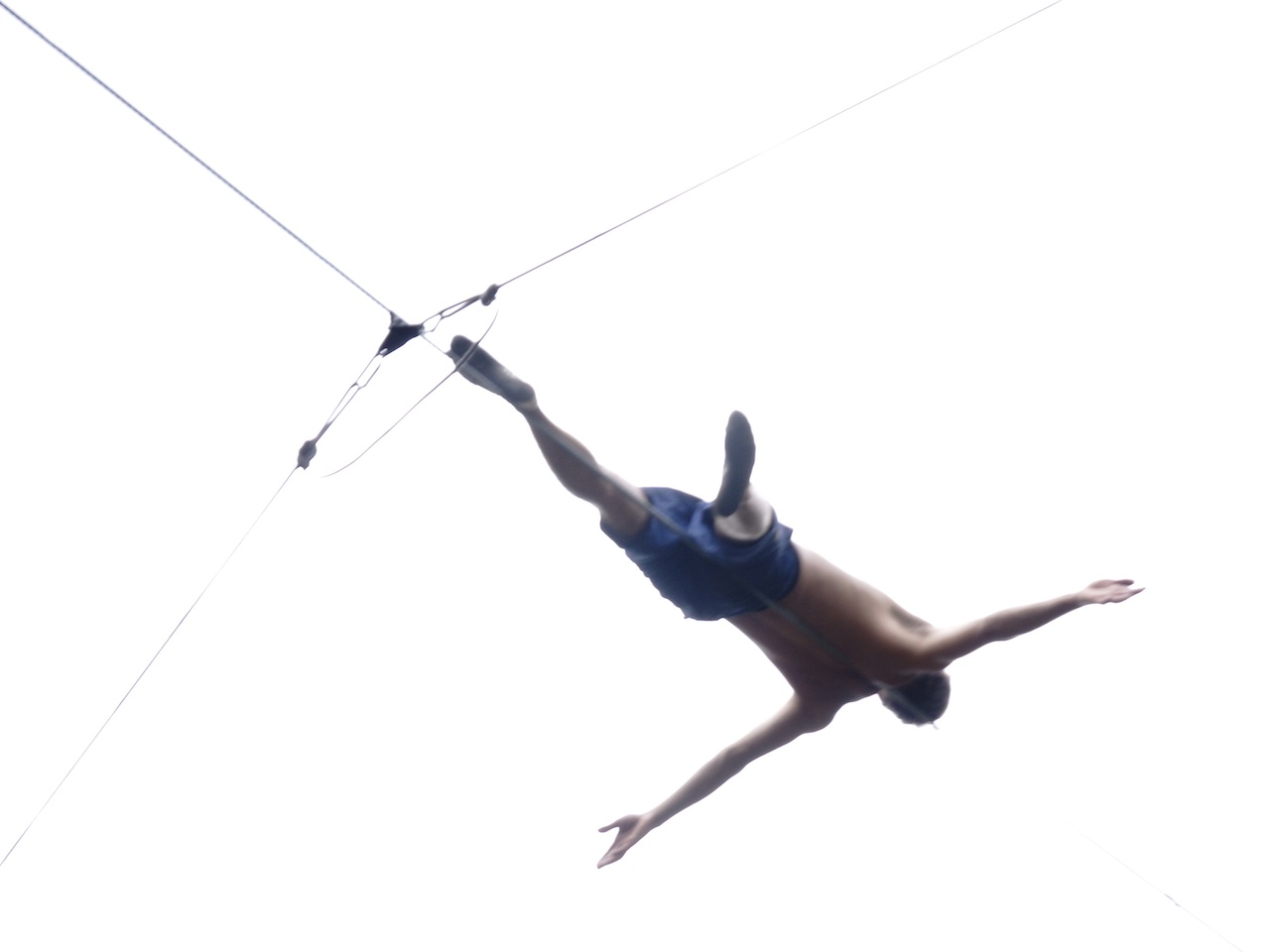
I was beginning by confronting the void and the wire, but in my second day onto it, I was fooling around on a practice wire at the end of the day and mysteriously injured my wrist. I am not sure exactly when I did it, but it hurt badly and put an end to the work on the high wire until it heals, probable a little while longer. So I returned to the low wire and have been continuing the immense practice the high wire requires. Not only does one need a certain physical prowess to engage in such aerial activity, but a mental calm must be developed through time on the wire.
I currently am exploring ways of presenting the devotion to the wire which gives a sense of the intense and long labor of training. I have taken video of myself practicing on the low wire, but have found it less interesting than the format of time lapse. A time lapse is a compression of time, a way of seeing the world turn. I have not quite been able to complete a short video work because of equipment issues/learning a new medium, but very soon hope to present a short video which is about my time on the wire.
I have also been drawing, some remedial drawing of the figure and anatomy since it has been over ten years since I have drawn the figure, but also looking to the human form (skeletal and muscular) for lessons in structure and elegance. I have been copying drawings from Atlas of Human Anatomy for the Artist, by Stephen Peck. I am doing ink drawings, (no erasing or correcting mistakes, just keeping going and accepting the errors as they are) which keeps me loose and less concerned with a finished product. I am looking to the drawings not as works to present but as investigations into proportions, forms and the mechanics of the body. Looking at the skeleton and muscles as an engineer looks toward nature as examples of structural/mechanical solutions. I have ordered Leonardo’s On the Human Body which I look forward to studying and working from.
I have also been thinking about building an apparatus to carry a camera over a void on cables. This could be a way of traveling the viewer over a wire and give a perspective of participation.
Excitingly I am also beginning to find commonality of ideas toward my research in readings of several engineers, performers, and philosophers. I have read –The Theater and it Double, by Antonin Artaud,–Frei Otto, Form and Structure, by Philip Drew,–Tao of Jeet Kune Do, by Bruce Lee,–On the High Wire, By Philippe Petit,–Things Themselves are Lying and so are Their Images, interviews with Robert Le Ricolais,–Towards A New Architecture, by Le Corbusier,–and the sections, Of The Mathematically Sublime, and Of the Dynamically Sublime In Nature, from The Critique of Judgement, by Emmanuel Kant.
I am interested in ideas and practices that respect energy and material in attempts to get the most from them, generally in functional ways, whose final form transcends functionality by embodying intrinsic graces and elegance in movement and structure.
Le Corbusier tells us in Towards A New Architecture, “The Engineer, inspired by laws of economy and governed by mathematical calculations, puts us in accord with universal law. He achieves harmony”.
But what is harmony? Harmony perhaps can be seen as a multivalent functionality, working as a single tone, but also in companionship with an environment. Perhaps part of the beauty and harmony of nature comes from what Robert Le Ricolais observes, “what man makes is usually single purposed, whereas nature is capable of fulfilling many requirement, not always clear to our mind”
Bruce Lees meditates on a connection to nature and kind of harmony with universal law through multivalence by referencing art itself. He says in Tao of Jeet Kune Do, “Art is the way to the absolute and the essence of human life. The aim of art is not the one sided promotion of spirit, soul and senses(underline mine), but the opening of all human capacities–through, feeling, will–to the life rhythm of the world of nature.”
So the grace and economy which I see in a tensile roof of Frei Otto is not just that it serves a duty to keep the inhabitants dry and sheltered, but does so “conveying the sense of effortless grace which is so much the feature of a great athletes performance” Frei Otto, Form and Structure, Philip Drew
This “effortless grace” however did not come from ornamentation or a quest for aesthetic revelation, but from careful investigation of nature (soap films, bones, spiders et. al.), the development of ways of measuring/understanding the forms studied, and then translation of these forms to materials under tension and compression in models of gradually increasing scale culminating in monumental structures both elegant and functional.
“The height of cultivation runs to simplicity. Halfway cultivation runs to ornamentation.” Bruce Lee.
Ok, that’s all for now. Hope your projects are fruitful. If you have any feedback or ideas about what I have presented please share.
best jamie
